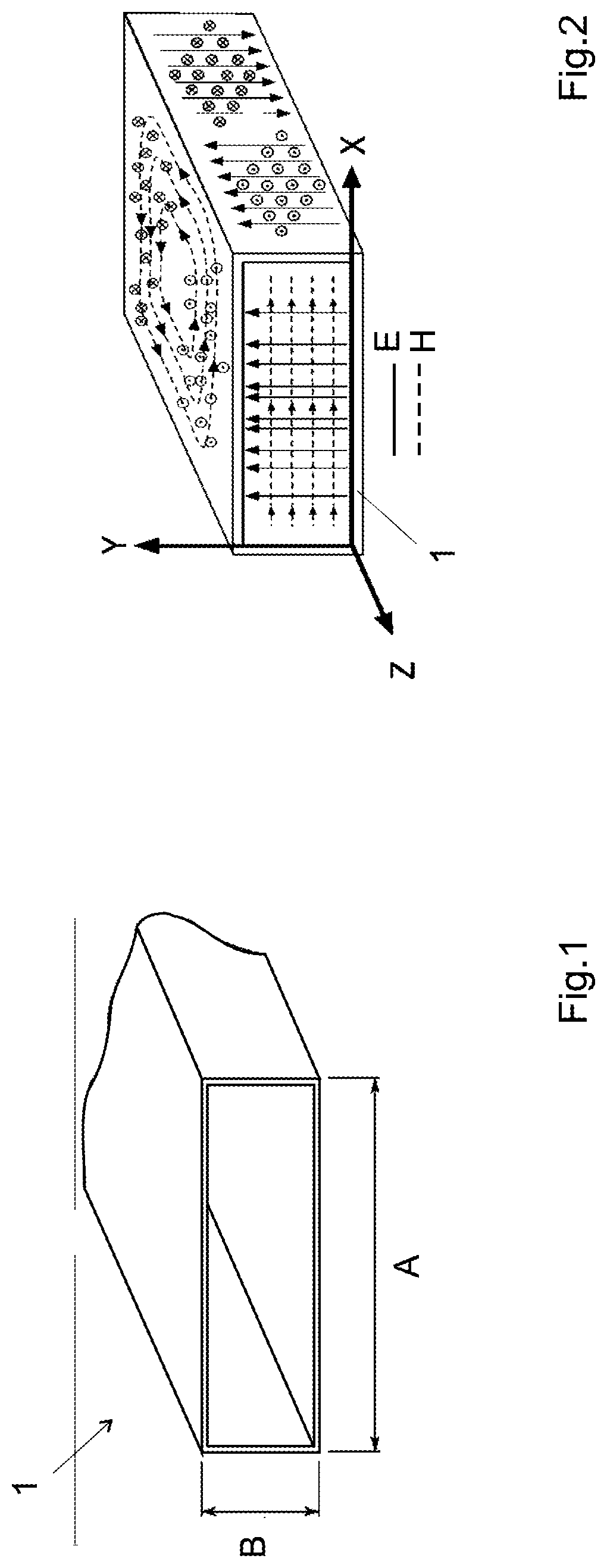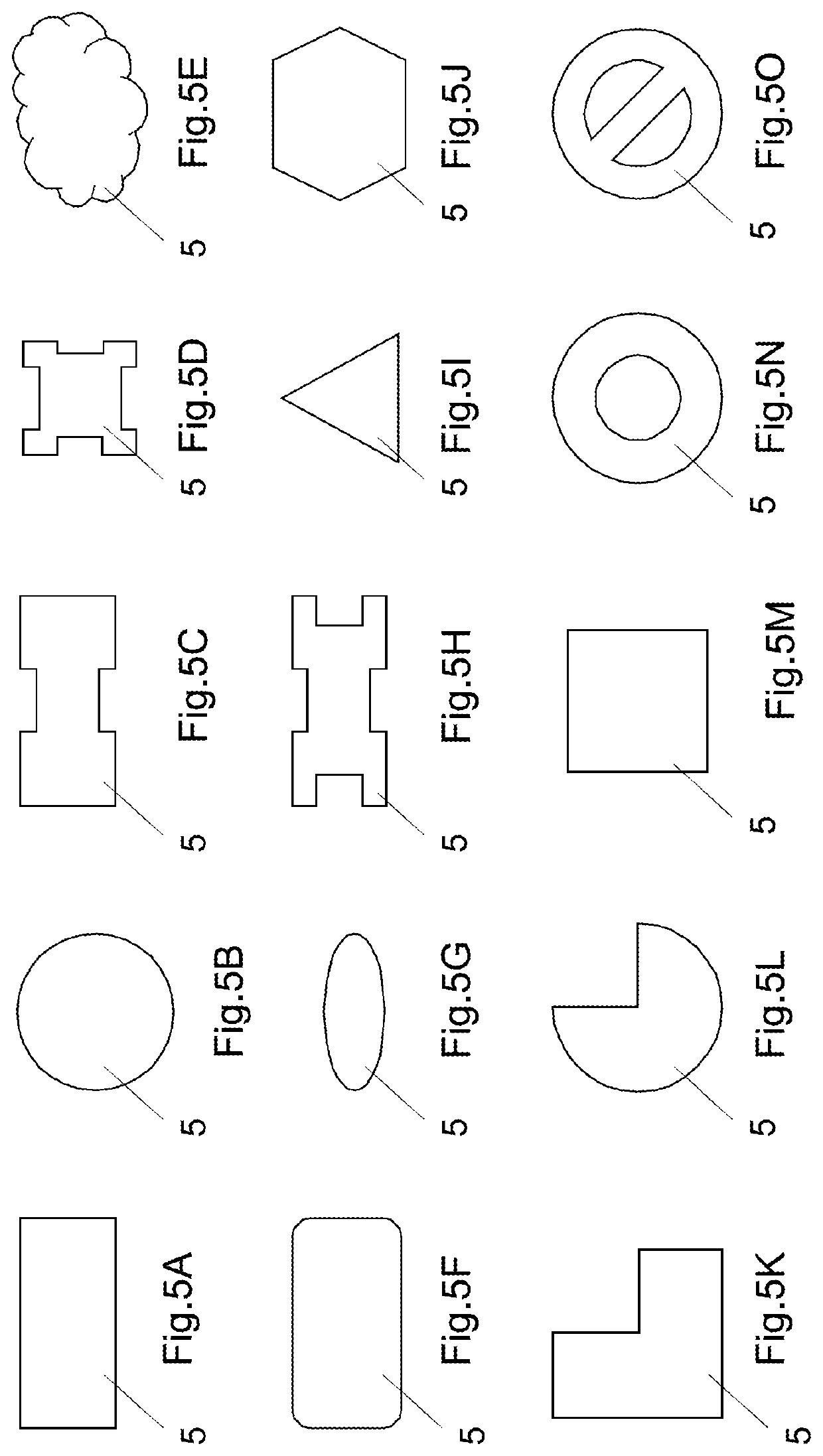A method of additive manufacture of a waveguide as well as waveguide devices manufactured according to this method
- Summary
- Abstract
- Description
- Claims
- Application Information
AI Technical Summary
Benefits of technology
Problems solved by technology
Method used
Image
Examples
Embodiment Construction
[0067]FIG. 7 illustrates a perspective view of a waveguide device 1 according to the invention, in this case a waveguide device having a rectangular section. It comprises a core 2 of non-conductive material, for example of polymer such as epoxy, or ceramic, manufactured by additive manufacturing, for example by stereolithography. This core delimits an internal channel 5 designed for waveguiding, and whose section is determined according to the frequency of the electromagnetic signal to transmit. The dimensions of this internal channel a, b and its shape are determined as a function of the operating frequency of the device 1, i.e. the frequency of the electromagnetic signal for which the device is manufactured and for which a transmission mode that is stable and optionally has a minimum of attenuation is obtained.
[0068]The core 5 is made monolithically, for example by stereolithography. It may also consist of several parts formed by stereolithography and assembled together before pla...
PUM
| Property | Measurement | Unit |
|---|---|---|
| Length | aaaaa | aaaaa |
| Diameter | aaaaa | aaaaa |
| Length | aaaaa | aaaaa |
Abstract
Description
Claims
Application Information
 Login to View More
Login to View More - R&D
- Intellectual Property
- Life Sciences
- Materials
- Tech Scout
- Unparalleled Data Quality
- Higher Quality Content
- 60% Fewer Hallucinations
Browse by: Latest US Patents, China's latest patents, Technical Efficacy Thesaurus, Application Domain, Technology Topic, Popular Technical Reports.
© 2025 PatSnap. All rights reserved.Legal|Privacy policy|Modern Slavery Act Transparency Statement|Sitemap|About US| Contact US: help@patsnap.com



